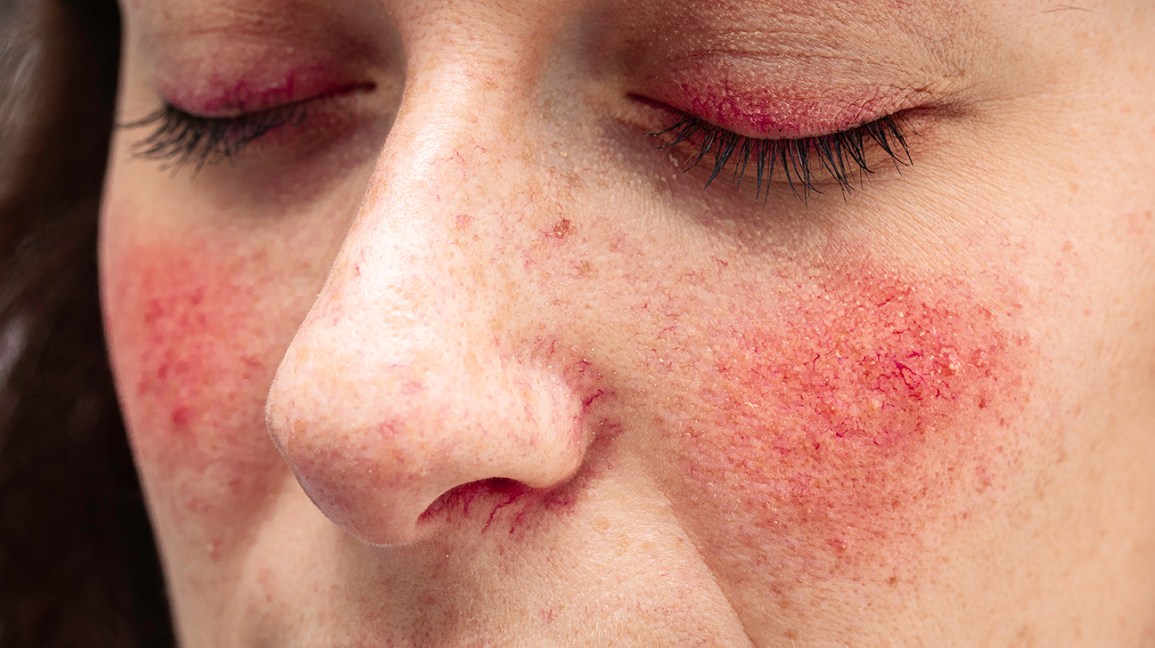A rosy cheek in lovely winter weather is beautiful. But for some people, this is an irritating skin condition. It is rosacea. Rosacea is a skin condition with blushing and flushing of the skin, along with inflamed blood vessels. The worst thing here is anything can trigger this skin irritation easily. That means hot food, cold, sun, stress, and so on. While we think it appears only on cheeks, it can also affect the other parts of the body like the chest, upper back, inside your eyes, and more. We need to pay attention to the early signs of rosacea and types of rosacea rashes to keep ourselves away from the severity of the disease.
What causes rosacea?
Sadly, the exact cause of rosacea is still unknown. There are certain studies and researches carried by dermatologists that reveal genetic and environmental factors can be the reason. Rosacea’s condition also connects with other factors like metabolic diseases, food allergies, and hormonal imbalances.
Increased alcohol consumption, past smoking history, and obesity are also risk factors in women. Therefore, maintaining a healthy weight, quitting smoking, reducing alcohol intake, and following other healthy lifestyles will help minimize the risks involved.
Some types of microbes like Demodex on the skin may stimulate inflammatory reactions of rosacea. Anything that triggers the blood vessels dilation like stress, living in extreme temperature (hot or cold) for a long time, hot beverages, spicy foods, and more are likely to cause any types of rosacea rashes on the skin.
What are the types of rosacea?
It can be difficult to diagnose this skin condition and can appear in any place on the body and in any form. Still, certain studies say if you have this skin condition below your chest then it is likely not rosacea. That may be eczema. Rosacea usually appears on the face and eyes and not on the arms or legs.
The National Rosacea Society categorizes skin conditions based on phenotypes. Here are the four types:
Erythematotelangiectatic rosacea (ETR)
This condition is classified based on the three common symptoms including inflammation on the blood vessels, flushing, and redness. ETR is the most type of rosacea these days.
Phymatous rosacea
This type appears with a bulbous nose and cheeks. Thickening of the skin resulting in a bumpy texture. This is most common in men than in women.
Ocular rosacea
This type mostly appears in the eyes. Watery, burning, itchy, or bloodshot appearances in the eyes are the signs.
Papulopustular rosacea
Acne-like bumps appear on the face and can cause swelling over time. This condition resembles whiteheads but the proper diagnosis from the dermatologist can help avoid risks.
Treatment for rosacea rash
Rosacea allergic reaction can be treated based on the type you’re dealing with. Ointments, oral medications, skincare products, or in-office treatments are the common procedures chosen by your dermatologist.
Over-the-counter options
Purchasing skin care products from your local pharmacy won’t work much on permanently reducing any visible symptoms. Since people with sensitive skin often get affected, it is important to choose mild cleansers and moisturizers free of alcohol. Using high-quality sunscreen with an SPF of at least 30 every day, while heading out in the hot sun will be helpful.
Prescription topicals
Some antibacterial creams like metronidazole can help reduce the overgrowth of Demodex.
Oral medications
There is no definite bacterial pathogen that has been identified yet. However, an antimicrobial and anti-inflammatory drug like doxycycline can be prescribed by your dermatologist. Anti-parasite medication like ivermectin is also popularly used in reducing the Demodex populations in the affected region.
Laser and light therapy
Laser resurfacing treatments are used based on the severity of the condition. These methods help reduce visible symptoms.
